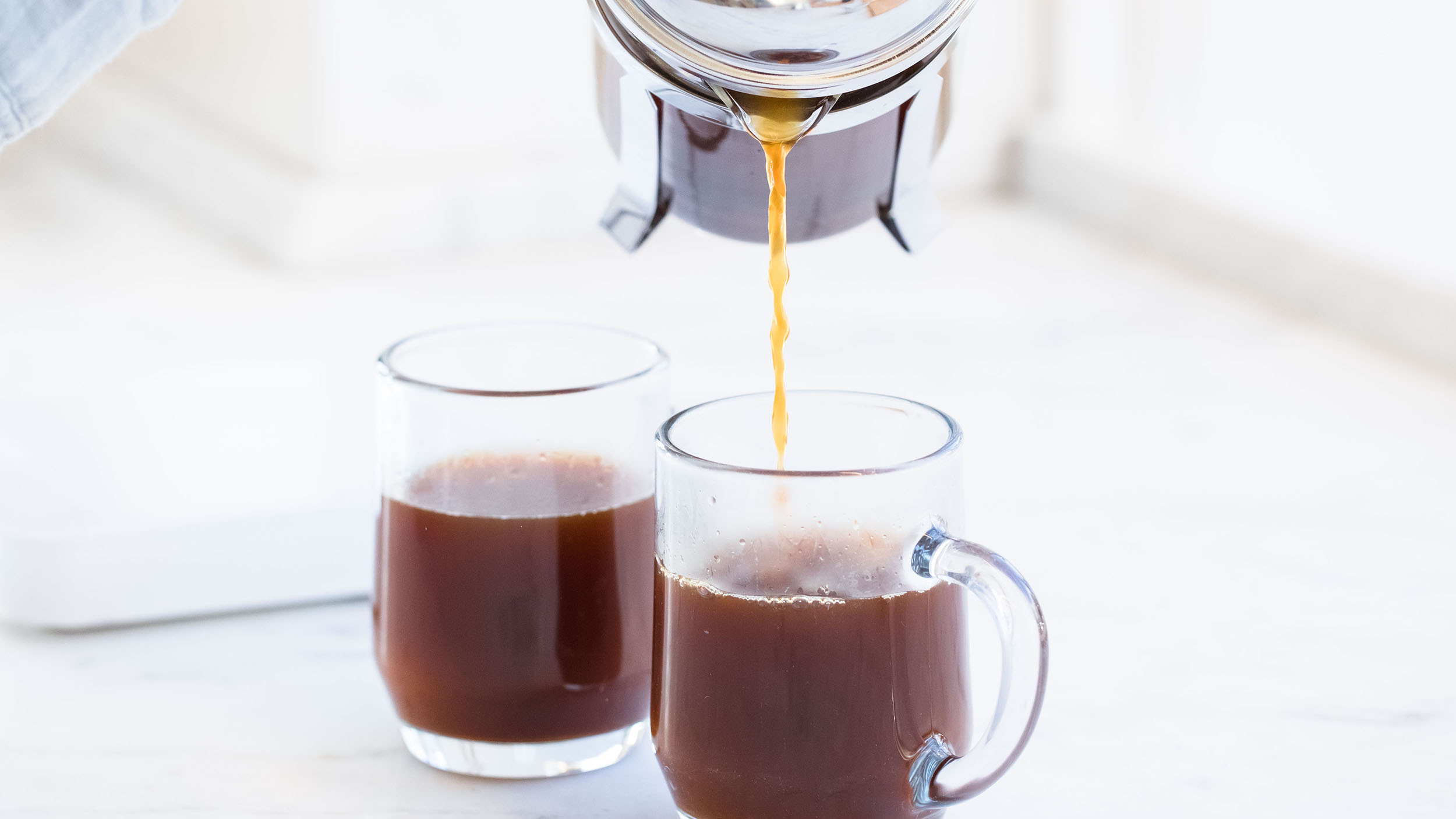Pro-Tips: A New Take on French Press
Achieve unprecedented assertiveness in fifteen minutes.
Just don’t press.
We love the traditional French press method—in a nutshell: Bloom, steep for four minutes, plunge, enjoy. But it turns out there’s another, slower way to do it. We’ve taken to calling it the no-press French press. The basics: Bloom, steep for fifteen minutes, and don’t press. Instead, at the four minute mark, use two spoons to break the crust and let the grounds sink to the bottom. Skim off the crema and steep for eleven minutes longer. Pour the coffee into heated cups and enjoy a new immersion in coffee flavor.
If that sounds completely over the top, it’s not only easy, it can actually yield, in the words of its creator, “a full representation of what a coffee really is.”
We were first turned onto this slower approach by Bryn Garrehy, who trained many baristas at Blue Bottle. Bryn was inspired by another no-press method from coffee writer James Hoffman. Bryn began playing with his own French press at home. He tinkered not only with the grind size, brew ratio, and time, but also how he handled the grounds. By extending the brew time to 15 minutes, and gently encouraging the grounds to sink to the bottom instead of plunging them, he yielded a cup of unprecedented clarity of taste, of assertiveness.
Bryn’s great insight: With his new method, he had turned the French press into a cupping.
How? It helps to take a quick step back, to understand exactly what the French press and cupping methods are.
TWO WAYS TO BREW
Outside of espresso, brew methods loosely fall into two categories: Full immersion and filter. French press and cupping fall into the first camp.
FULL IMMERSION methods involve exactly that: Submerging the grounds directly in the hot water. The method leaves a lot more insolubles in the water—all that cellulose and chaff that stay behind in the water are a big reason why these techniques taste so much more full-bodied. French press fans love that rich, almost chewy mouthfeel. Detractors find it gritty, even bitter.
FILTER methods include pour over and Chemex, where the coffee grounds gently release their flavors as water pours over the grounds, and the filter traps any parts of the coffee that can’t dissolve, such as cellulose and other fibers, for delicate and articulate results.
THE FRENCH PRESS AS a professional CUPPING
Cupping is no way to brew at home—it’s an industry method used by coffee professionals to strictly evaluate coffee. But it shares fascinating parallels with French press. It starts the same: Grounds are covered in water, in a cup instead of carafe, and float up as they steep. But instead of meeting with a plunger screen, they rise to the surface where they form a crust.
After several minutes, tasters break that crust with a spoon, at which point most of the grounds sink to the bottom. Any grounds left floating are skimmed off with spoons. Though the cups hold a mud pie’s worth of grounds, the coffee is far from muddied. It’s actually quite clear, because the tasters do nothing to agitate the grounds as they steep. You might think an extraction of such length would taste bitter, but it was just the opposite: Wonderfully clear and enduring.
The Blue Bottle No-Press French Press
In our no-press French press method, we do the same thing: We cover the grounds with water, then we don’t mess with them. The plunger never enters the picture. We break the crust with two spoons so the bulk of the grounds gently sink to the bottom—and then we let the coffee keep steeping.
The longer, quieter extraction results in a coffee that’s almost juicy, with a full, rounded balance that’s not always developed through other brew methods. Even the finish, which spreads across the palate with a progression of sensations, is different. In the cup, the coffee is also just gorgeous to look at. Speckled with the oily colloids natural to coffee, the surface all but shimmers.

